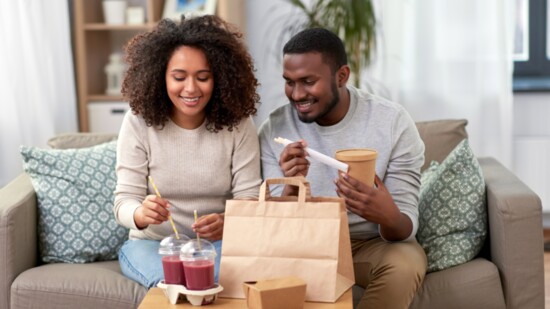We are now fully one year into the COVID pandemic and it has unquestionably changed how we work, play and come together. Few businesses have been as heavily impacted as the restaurant industry. According to the National Restaurant Association, mandated lockdowns and concerns about the safety of dining in public during the pandemic has resulted in 17% of all US restaurants closing.
In communities across America, people responded to the pressures put on local restaurants by ramping up their ‘eat local’ campaigns. Here in Williamsburg Michelle Sieling, Jacquelyn Liebler and Brandi Walker got together and decided to create a local Facebook group, Williamsburg Eat Local, to connect the community with local family-owned restaurants. The public group now has over 10,000 members where people share their favorite local culinary discoveries, and restaurants post new menus and current specials.
Simply search on Facebook, or Google ‘williamsburg eat local’ to find the group and join. The local foodie hive-mind will answer any restaurant related question you can think. One member recently made a post looking for the best dog-friendly place to drink a beer on a Monday, and the answers came pouring in. Within the first day there were 53 replies promoting at least half a dozen different location. “The community has been incredibly supportive, and local restaurant owners are so grateful for the community’s efforts”, Jacquelyn said in response to the success of the group.
The industry has had to continually evolve over this past year. It started with roping off or removing seating areas. Then many locations began adding outdoor dining options. Merchants Square got in on the action and lined Duke of Gloucester Street with umbrella tables and chairs. Savvy local owners began offering family style meals that were easy and affordable options for parents to skip another night in the kitchen. Revolution Golf & Grill went so far as to incorporate movie nights and indoor archery to their experience-based dine-in offerings to keep people coming back.
Ultimately, however, it was the shift from dine-in to delivery that has proven to be the most difficult and potentially dangerous adaptation restaurants have made to serve the community they so love. Aside from Chinese food and pizza shops, most places did not offer delivery as a part of their business. Business owners looking to add delivery service found that special insurance was required, and was often too cumbersome to do in-house. To make delivery possible, most local restaurants rely on just three billion-dollar ‘delivery companies’ - Grubhub, DoorDash, Uber Eats.
These delivery apps appear to efficiently fill the void and empower restaurants to sell more meals to more customers, an apparent win-win. What your favorite restaurant isn’t telling you, but should, is that these increasingly common deliveries are crippling their profitability and likelihood of survival.
Here’s how the business model works: Let’s say a consumer wants to order a sandwich from a local restaurant via one of these delivery apps. A sandwich and fries costs $14. The consumer might pay up to $22 because of the service fee, tip, tax and a delivery fee.
From that $14 sale, the restaurant might get to keep $9 if the commission fee is 35%. What gets overlooked is that $8 of the $9 is likely the overhead expense to provide that meal. This means there is (hopefully) $1 of profit where there would have been $5. To express that more clearly, 1 curbside pickup can generate the same profit margin for your favorite restaurant as 5 identical Grubhub deliveries! Considering that restaurants also pay the tax on meals delivered by these companies, some meals can actually be delivered at a loss to the business.
If you are comfortable dining in public where every precaution is being made to keep everyone safe, it unquestionably has the greatest economic impact. That same hypothetical meal would have net perhaps $17 dine-in with a tip, or closer to $30 if you added a cocktail and tip. Dining-in is certainly not in everyone’s comfort zone, and not always practical. For that reason, local restaurant owners we spoke with passionately encouraged people to contact them directly for delivery options and to use contact-free curbside pickup.
Annalisa Liguria-Dill, from Anna’s Brick Oven Pizza and Pasta told us, “Some may not realize, but the apps charge very high commission rates and that money does not stay in the community… We have online ordering directly on our website annasbrickoven.com and offer curbside takeout and delivery with a rewards program as an incentive.” Annalisa added, “ Ideally we would prefer for customers to come in to our restaurant to dine so they can get the full dining experience and social activity that is so important right now as people are generally feeling more isolated.”
Taking a few minutes to call ahead and order dinner for curbside pickup can have 3-10x the positive financial impact that simply waiting and ordering it for delivery after you settle in at home for the evening. Williamsburg residents have clearly proven they have the heart to help, and hopefully now have a clearer understanding of the importance of opting for dine-in, curbside pickup, to-go and in-house delivery orders over mobile app delivery orders.



